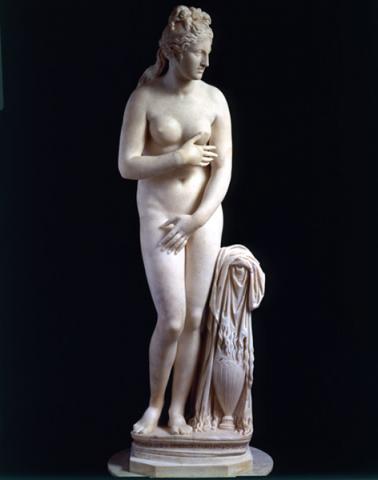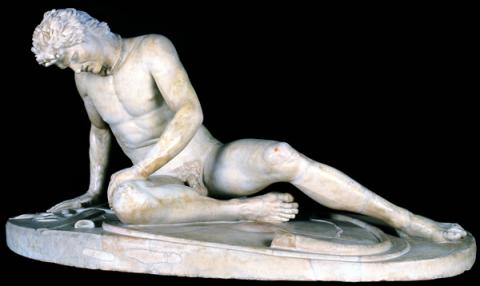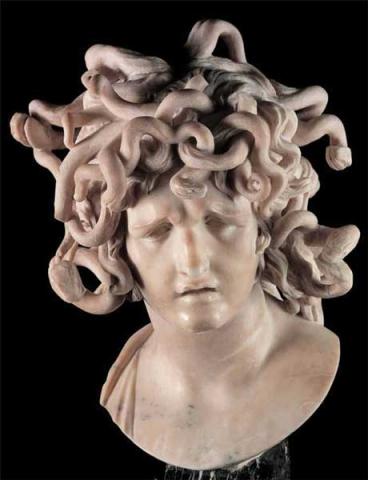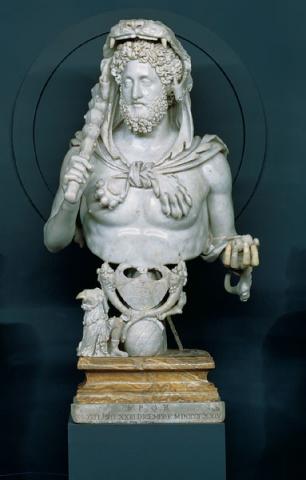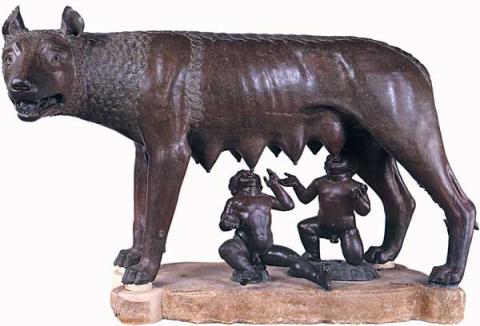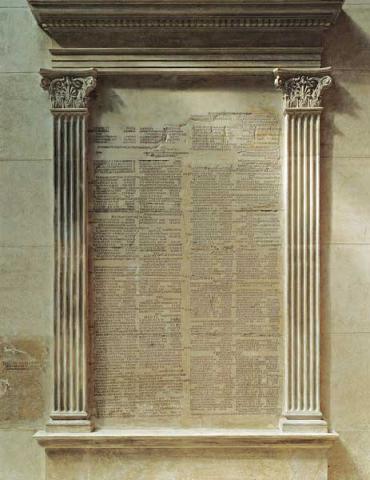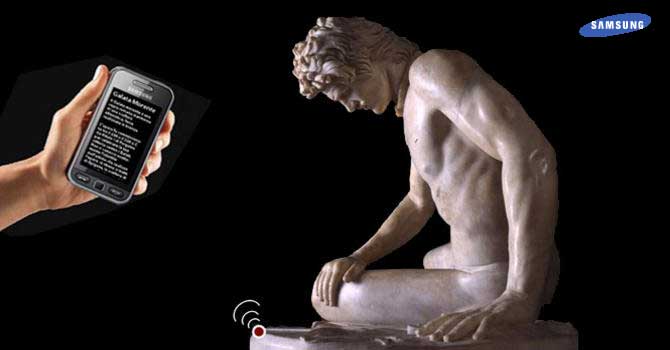Hall of the She-wolf
Ever since the middle of the 16th century, when it was an open three-arched loggia, this room has contained the bronze Capitoline She-wolf, which has become the symbol of Rome.
Embedded in the walls are fragments of Consular and Triumphal Fasti, lists of magistrates and triumphal victors from the time of the republic to the Augustan Age discovered in the Roman Forum and part of an arch dedicated to Augustus.
The pictorial wall decoration, dating back to the first decade of the XVI century and traditionally attributed to Jacopo Ripanda, is rather fragmentary and difficult to decipher.
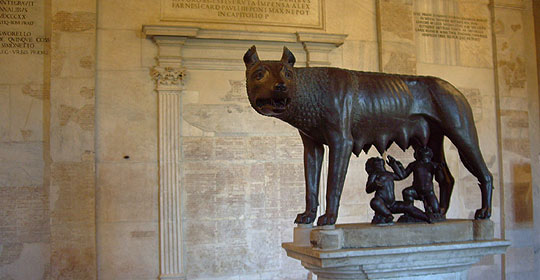
The Capitoline Wolf is placed at the centre of the room. The dating of the work is traditionally dated to the first half of the V century BC with many comparisons to Greek and Italic figurative production.
The statue, donated to the Romans in 1471, became the symbol of Rome when, transferred to the Capitol, the twins Romulus and Remus (the legendary founders of the city) were added to the ancient bronze. Since then the work is stored in this building and from the Sixteenth century, according to witnesses at the time, was placed in this room, formerly an open space to the outside with three arches. The lodge was decorated between 1508 and 1513 with a series of frescoes attributed to Jacopo Ripanda. The subsequent inclusion of two large memorial stones caused the loss of much of the decoration, which is now preserved in an extremely fragmented state.
In 1586, on the back wall of the hall, a marble structure was put together from the elegant classical architecture of the Consular and Triumphal Fasti, a historical document of significant value, which lists on marble tablets the names of magistrates and triumphal victors from the time of the republic to the Augustan Age. These tablets were found in the Roman Forum in the Sixteenth century and were originally intended for a triumphal arch erected in honour of Emperor Augustus in 19 BC.
The floor mosaic is invaluable: an ancient artefact found in 1893 and then reassembled in this space for its extraordinary symbolic value.


























